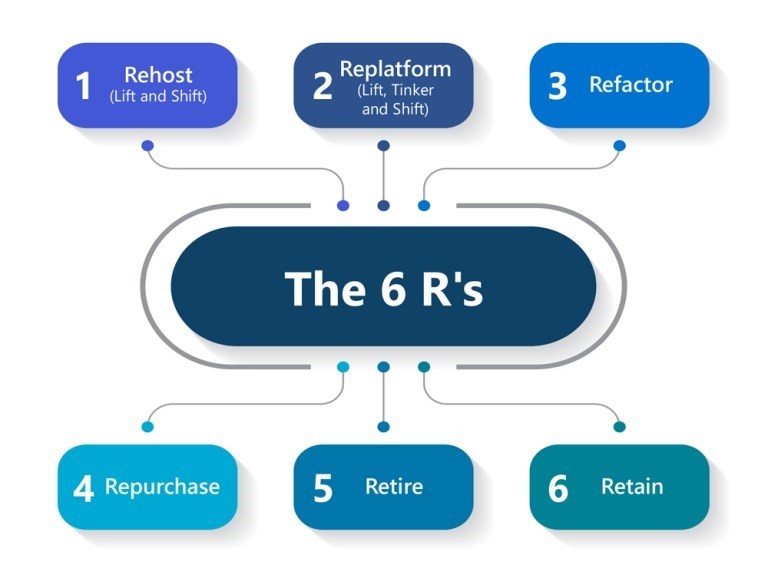Cloud migration is an essential step for businesses looking to enhance their digital capabilities and operational flexibility. However, navigating this transition requires a clear understanding of the needs and strategic approaches that ensure a successful migration. One pivotal framework that helps in this process is the 6rs of cloud migration. This framework guides companies in selecting the most appropriate migration strategy based on their specific applications, goals, and the technical requirements of their IT infrastructure. Understanding and applying these 6Rs can significantly streamline the migration process, reduce risks, and optimize performance in the cloud.
Let us delve into the 6rs of cloud migration briefly.
Rehosting
Rehosting, or Lift and Shift, involves transferring applications from an on-premises environment directly to the cloud without modification. This strategy is particularly beneficial for businesses looking for a quick migration to capitalize on the basic advantages of cloud computing, such as reduced physical data center costs and increased scalability. It is ideal for companies needing immediate results with minimal disruption.
Replatforming
Replatforming, or Lift, Tinker and Shift, entails making slight modifications to applications to optimize them for the cloud environment while keeping major alterations to a minimum. This approach allows businesses to take advantage of cloud efficiencies, such as improved performance and reduced resource consumption, without a complete overhaul of existing applications. It strikes a balance between speed and enhancement.
Refactoring
Refactoring, sometimes called Rearchitecting, is a more involved process where applications are fundamentally redesigned to fully leverage cloud-native features, such as auto-scaling, serverless computing, and microservices. This strategy is suited for applications that require more agility, scalability, and performance than what their existing architectures can support. It is ideal for businesses looking to innovate and maximize their cloud potential.
Repurchasing
Repurchasing, or Drop and Shop, involves switching to a new cloud-native software that can replace outdated or legacy systems. This approach is often used when the existing solutions are too rigid or costly to update and can benefit from modern functionalities offered by SaaS products. It is a quick path to modernization without the complexities of upgrading old software.
Retiring
Identifying which applications to retire is a critical aspect of cloud migration. By determining which systems are obsolete or no longer useful, companies can declutter their IT environments and focus resources on applications that provide genuine value in the cloud. This simplification can lead to cost savings and more streamlined operations.
Retaining
Retaining involves keeping certain applications in their existing environments when they are not suitable for cloud migration due to various reasons such as regulatory compliance, technical limitations, or cost concerns. This strategic decision ensures that only suitable applications are migrated, maintaining stability and compliance while optimizing the cloud portfolio.
Final thoughts
The 6Rs of cloud migration provide a comprehensive strategy that helps businesses approach cloud migration with a clear and effective plan. By understanding and applying these six strategies, companies can ensure a smooth transition to the cloud, tailored to their specific needs and conditions, paving the way for enhanced performance, cost efficiency, and innovation in their operations.


